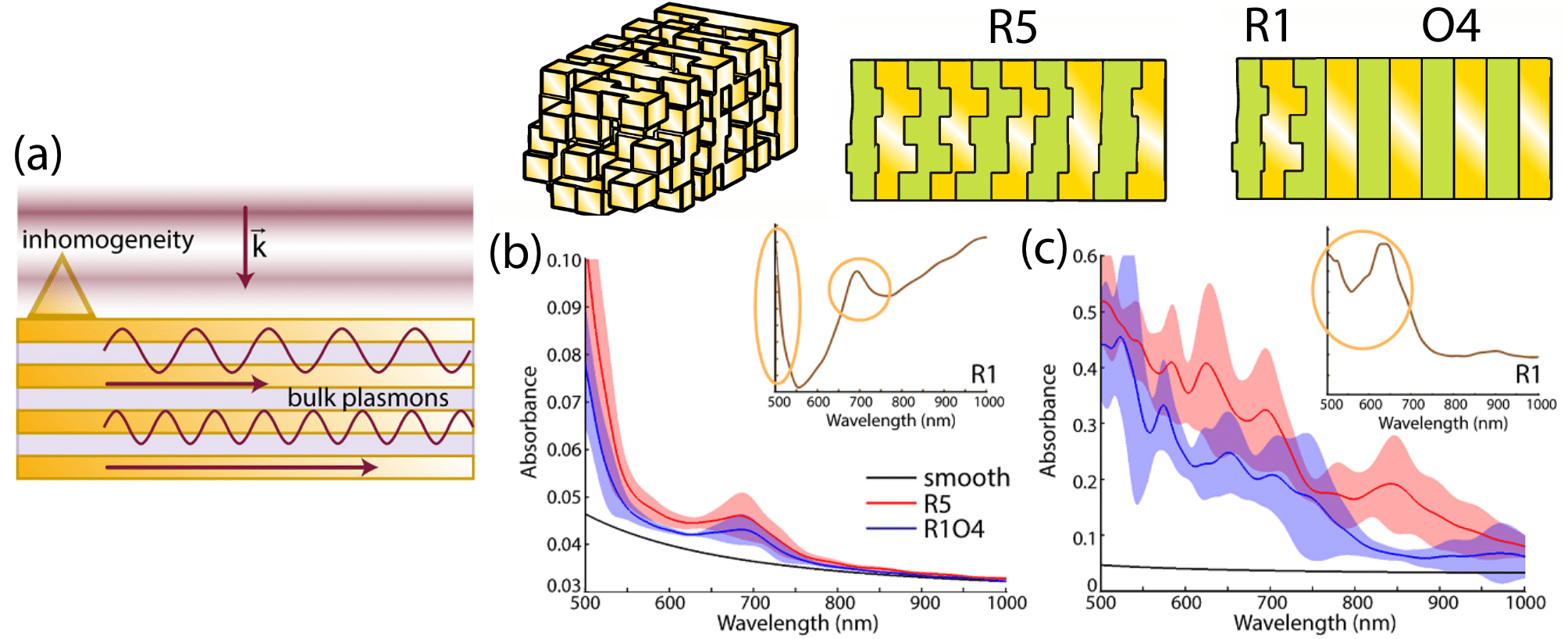
Internal Roughness Improves Hyperbolic Metamaterial Absorber
Hyperbolic metamaterials (HMMs) can support electromagnetic waves with extremely large wavevectors. Such waves can be excited by an incident plane wave via scattering at surface inhomogeneities [Fig. 1(a)]. Various applications of hyperbolic metamaterials have been suggested [1], including imaging, sensing, thermal radiation engineering and absorbers. Specifically, it was shown earlier [2] that HMMs with roughened outer surface have improved light absorption compared to smooth-surface HMMs. In this work we further investigate the influence of internal roughness, naturally occurring during material deposition, on the performance of an HMM-based absorber. We use numerical FDTD simulations for analysis of metal-dielectric multilayers with spatially varying layer thickness T=T0(1+Δ), where T0 is the mean thickness and Δ∈[-δ,δ] is a random number, with thickness variation accumulating from layer to layer [3]. We demonstrate that increasing roughness leads to absorbance increase. We also identify the role of internal roughness as distinct from the outer surface roughness only [Fig. 1(b) and (c)], and discuss physical mechanisms contributing to increased losses. Our analysis leads to the conclusion that HMM based absorbers can benefit rather than suffer from internal roughness that naturally appears in fabrication.

Figure 1. (a) Normally incident plane wave can excite large wavevectors bulk plasmons in HMM via scattering at surface inhomogeneity. (b-c) Absorbance for 5 rough layers (R5) is larger than for 1 rough surface (R1) and 4 ordinary internal (O4) layers for δ=0.05 (b) and δ=0.25 (c).
References
[1] M. Noginov, M. Lapine, V. Podolskiy, and Y. Kivshar, Focus issue: hyperbolic metamaterials, Optics Express, 2013, vol. 21, pp. 14895–14897.
[2] E. Narimanov, H. Li, Y. Barnakov, T. Tumkur, and M. Noginov, Reduced reflection from roughened hyperbolic metamaterials, Optics Express, 2013, vol. 21, pp. 14956-14961.
[3] A. Andryieuski, S. V Zhukovsky, and A. V Lavrinenko, Rough metal and dielectric layers make an even better hyperbolic metamaterial absorber, Optics Express, 2014, vol. 22, pp. 14975–14980.
Powered by Eventact EMS